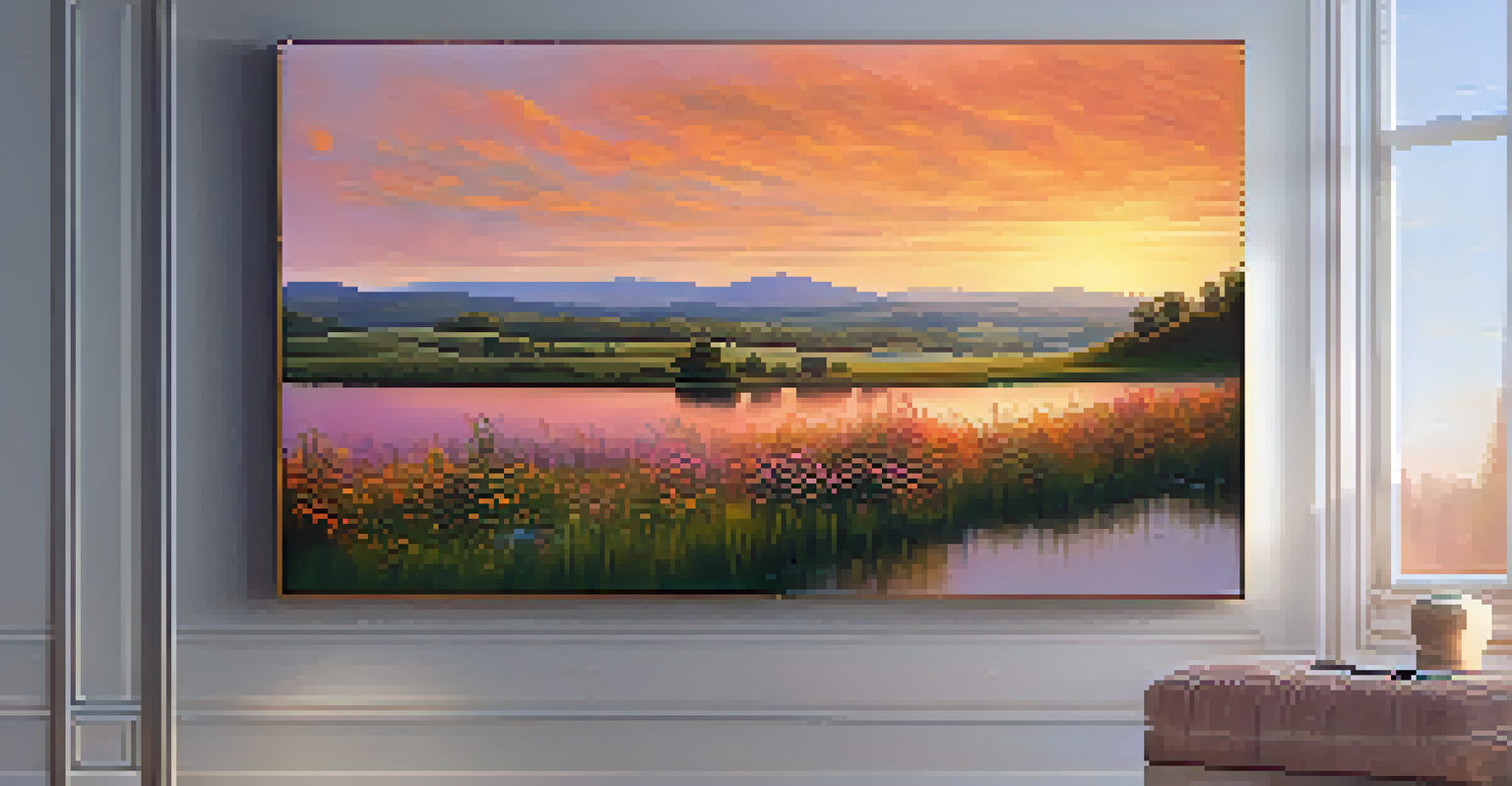Creating Atmosphere Through Color Grading in Cinema

Understanding Color Grading and Its Importance
Color grading is the process of altering and enhancing the color of a film. It plays a crucial role in storytelling by influencing how viewers perceive the mood and atmosphere of a scene. Just like a painter uses different shades to evoke emotions, filmmakers use color grading to guide audience reactions.
Color is the keyboard, the eyes are the harmonies, the soul is the piano with many strings.
When done effectively, color grading can transform an ordinary shot into something extraordinary. For instance, a warm color palette can create a sense of comfort, while cooler tones might evoke feelings of sadness or isolation. This subtle manipulation of colors can significantly impact how the story is conveyed.
Moreover, color grading helps maintain consistency throughout a film. By applying a cohesive color scheme, filmmakers ensure that scenes flow seamlessly, allowing viewers to immerse themselves fully in the narrative without being distracted by abrupt changes in tone.
The Psychological Impact of Colors in Film
Colors have a profound psychological impact, and understanding this is key for filmmakers. For example, red can symbolize passion or danger, while blue often represents calmness or sadness. By strategically using these color connotations, filmmakers can evoke specific emotions from their audience.

In cinema, color can also signify character development or thematic elements. A character's journey might be represented through a gradual shift in color tones—from vibrant hues in their happy moments to dull, muted shades during their struggles. This visual storytelling enhances character arcs and makes narratives more compelling.
Color Grading Shapes Storytelling
Color grading is essential in filmmaking as it enhances emotions and maintains narrative consistency.
Additionally, cultural associations with colors can vary, adding another layer of complexity. Filmmakers must consider the cultural context of their audience to ensure the intended message is communicated effectively. A color that signifies hope in one culture could represent something entirely different in another.
Color Grading Techniques Used in Filmmaking
There are various techniques filmmakers employ in color grading, each serving a unique purpose. For instance, the 'teal and orange' technique has become popular in action films, creating a striking contrast that enhances visual appeal. This method not only makes the visuals pop but also emphasizes the emotional stakes of the narrative.
Colors are the smiles of nature.
Another common technique is the use of LUTs (Look-Up Tables), which are pre-set color profiles that can quickly adjust a film's color grading. LUTs allow filmmakers to achieve specific looks efficiently, saving time during post-production. They provide a starting point that can then be fine-tuned to fit the film's unique atmosphere.
Moreover, filmmakers often utilize color wheels and curves to fine-tune specific hues. These tools enable precise adjustments to shadows, midtones, and highlights, allowing for a tailored visual experience. This level of detail ensures that every frame aligns with the director's vision and the story's emotional depth.
Creating Mood with Warm and Cool Tones
Warm tones, such as reds, oranges, and yellows, can create a sense of warmth and intimacy in a film. These colors often evoke feelings of happiness, comfort, and nostalgia. For example, a romantic scene bathed in warm light can enhance the emotional connection between characters and the audience.
On the other hand, cool tones like blues and greens tend to evoke feelings of calmness, sadness, or even tension. They can create a sense of distance or isolation, making them ideal for dramatic or suspenseful moments. A chilling scene set in a dark forest can be amplified by a cool color palette, enhancing the viewer's unease.
Colors Influence Audience Emotions
Filmmakers strategically use colors to evoke specific feelings and signify character development.
Filmmakers often blend both warm and cool tones to create a balanced atmosphere. This contrast can heighten emotional stakes and provide a richer viewing experience. For instance, a scene might start warm to depict joy, then shift to cooler tones as conflict arises, effectively guiding the audience's emotional journey.
The Role of Color in Genre-Specific Cinematography
Different film genres often utilize color grading to establish their unique identities. For example, horror films frequently employ desaturated colors to create a bleak and unsettling atmosphere. This choice enhances the sense of dread and foreboding, drawing viewers deeper into the spine-chilling narrative.
Conversely, comedies might lean towards bright and vibrant colors, setting an uplifting tone. This use of color fosters a lighthearted atmosphere, inviting audiences to laugh and enjoy the moment. A colorful, lively setting can make comedic situations even more engaging and relatable.
Even within the same genre, color grading can vary significantly based on the story's themes. A romantic drama might use soft, pastel colors to evoke tenderness, while a gritty crime thriller could employ harsh, shadowy colors to underline tension and danger. This versatility in color grading allows filmmakers to craft distinct visual narratives.
Case Studies: Iconic Films and Their Color Palettes
Examining iconic films can reveal how color grading plays a pivotal role in storytelling. For instance, in 'The Grand Budapest Hotel,' director Wes Anderson uses a pastel color palette that not only sets a whimsical tone but also reflects the film's quirky narrative style. Each color choice enhances the film's unique aesthetic and emotional resonance.
Similarly, 'Mad Max: Fury Road' employs a stark contrast between warm desert hues and cool, desaturated tones to convey a sense of chaos and urgency. The color grading amplifies the film's relentless energy, immersing viewers in its post-apocalyptic world. This deliberate use of color helps to shape the film’s identity and viewer experience.
Techniques Enhance Visual Impact
Various color grading techniques, such as LUTs and color wheels, allow filmmakers to create tailored visual experiences.
Another notable example is 'The Shape of Water,' where rich greens and blues create an enchanting, dreamlike quality. The color grading not only reflects the film's fantasy elements but also emphasizes the emotional connection between the lead characters. These case studies illustrate the powerful impact of color grading on cinematic storytelling.
Future Trends in Color Grading for Cinema
As technology advances, so do the techniques used in color grading. The rise of virtual reality and augmented reality in filmmaking is pushing boundaries, allowing for even more immersive color experiences. Filmmakers can create dynamic color environments that adjust based on viewer interactions, enhancing engagement.
Moreover, artificial intelligence is beginning to play a role in the color grading process. AI can analyze footage and suggest color adjustments based on the desired mood or genre, streamlining the post-production workflow. This innovation may open new creative avenues for filmmakers, making the process more efficient.

Lastly, the growing emphasis on diversity and representation in film is also influencing color grading choices. Filmmakers are becoming more conscious of how color can reflect cultural narratives and identities. This shift is likely to lead to richer, more varied color palettes that resonate with a broader audience, making future cinema even more vibrant and inclusive.